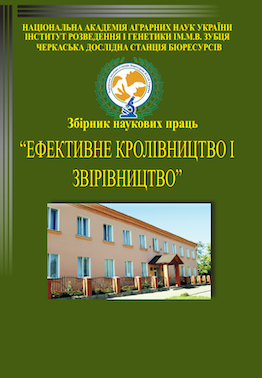THE DIAGNOSIS OF RABBIT HAEMORRHAGIC VIRAL DISEASE BY THE METHOD OF POLYMERASE CHAIN REACTION
DOI:
https://doi.org/10.37617/2708-0617.2020.6.155-165Abstract
This article is about development of a sensitive and highly specific method for the diagnosis of rabbit haemorrhagic disease virus (RHDV). The diagnosis of the disease was performed in combination with epizootic data, clinical manifestations, pathological changes and study of biological material from dead rabbits with use of the hemagglutination assay (HA) and reverse transcription polymerase chain reaction (RT- PCR). The rabbits of different age groups from 1 month were dying. Clinically it was characterized in most cases by sudden death of animals, in some cases the nasal bleeding was noted. At the autopsy, hemorrhagic diathesis and liver damage were noted. Rabbit liver was selected for the study, a suspension of liver homogenate was obtained and examined in HA with the human red blood cells, O-group. To clarify the diagnosis RT- PCR was performed and "degenerate" oligonucleotide primers with the corresponding nucleotide sequence specific for the VP1 gene (VP60) were developed and artificially synthesized to use this method. VP60 is the major capsid protein of the rabbit hemorrhagic disease virus, which provides the synthesis of 325 base pairs. The RT-PCR is performed for 35 cycles with annealing of the primers at 60°C.
Analysis of the result of RT-PCR is carried out in 1.5% agarose gel with an adding of ethidium bromide. 010-0,012 cm3 of the amplified mixture is appended in agarose gel wells. The results were evaluated by viewing the gel after electrophoresis on the transilluminator under UV light by the presence (or absence) of red-orange nucleic acid fragments of a certain size (325 b.p.). The specificity of the amplified nucleic acid fragment was determined by its position (size) relative to the fragments of standard markers. The studies have shown that HA has low level of sensitivity and specificity. RT- PCR has reliable affirmed the presence of RHDV ribonucleic acid in the material, however, this pair of primers makes it impossible to determine the genotype of the pathogen. The pathogen is identified from dead rabbits of private farms of Sumy, Cherkasy, Poltava, Kiev, Kharkiv regions.


